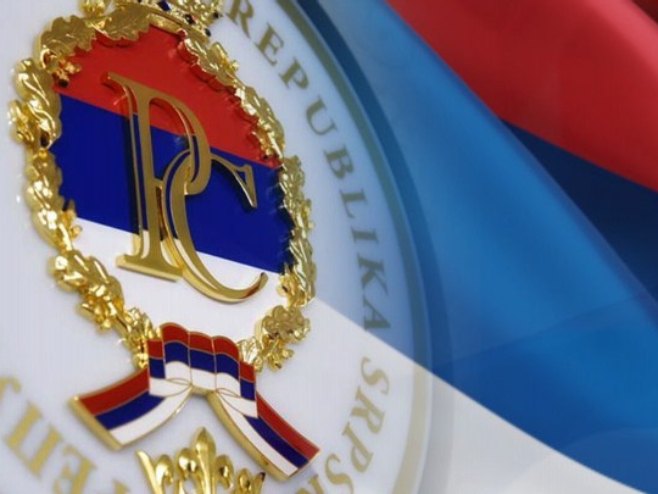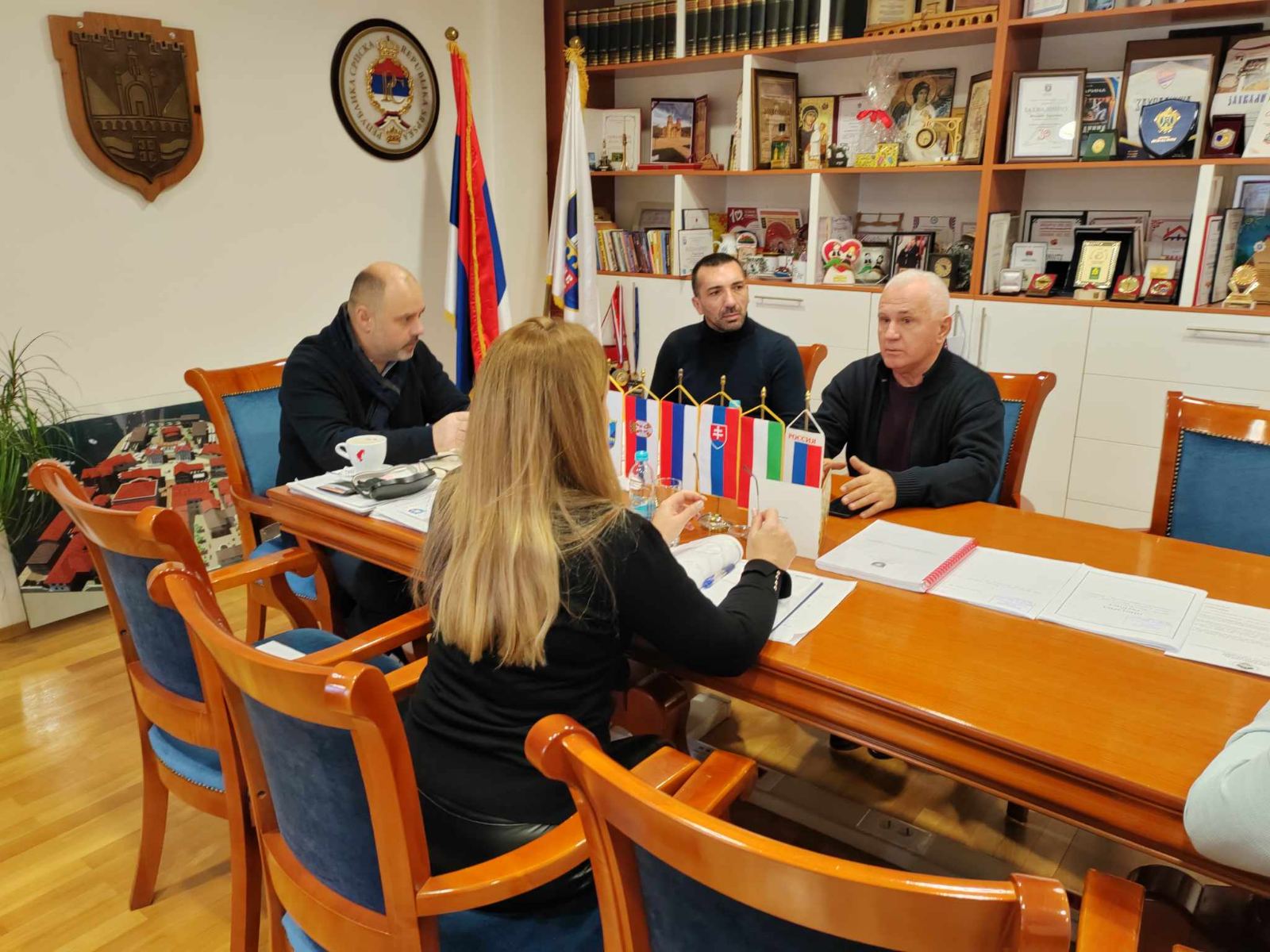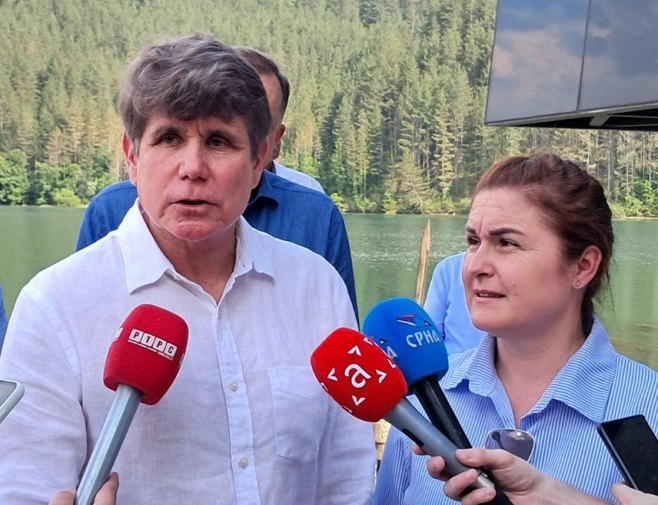The Government of Republika Srpska has submitted, along with the 31st report to the United Nations Security Council, the annexes including the conclusions of the International Commission for the Investigation of the Suffering of All Peoples in the Srebrenica Region during the period 1992-1995. The Commission, after thorough investigation, determined that the killings in Srebrenica in 1995 were a war crime, but neither an individual act of genocide nor genocide in general occurred.
This is outlined in Chapter 11 of the Report of the International Commission for the Investigation of the Suffering of All Peoples in the Srebrenica Region during the period 1992-1995.
- The report is based on scientific methodology by eminent experts of global stature from prestigious universities and institutes, led by Israeli historian Gideon Greif, a professor at the University of Texas and one of the leading Holocaust researchers in the world. Other members of the Commission included prominent academics from the USA, Japan, Australia, Nigeria, Italy, Serbia, and Germany – stated the Government of Republika Srpska.
The report notes that the crime in Srebrenica in 1995 followed the ethnic cleansing of the region by the Muslim-Bosniak army, during which hundreds of Serbian children, women, and elderly were deliberately tortured and killed.
- The Serb people experienced horrific crimes in this area, which have been completely overlooked, while there are attempts to portray the Bosniak victims in Srebrenica as the only victims – the statement reads.
The historical context of the Srebrenica region, or Middle Podrinje, cannot be viewed solely through the events of July 1995, as the report shows that conflicts between Serbs and Muslims in Middle Podrinje began in April 1992, with intensified attacks by Muslim armed forces in Srebrenica municipality in early May, starting a systematic campaign of ethnic cleansing of Serbian villages around Srebrenica, aiming to seize Bratunac and split Republika Srpska into two parts.
According to the report, one of the larger Serb villages in Srebrenica, Podravanje, was attacked on September 24. Thirty-one civilians and village guards were killed, several were captured, and the village was burned. The Serb village of Fakovići in Bratunac municipality was burned on October 5, with 28 civilians and village guards killed, including 12 women.
- Just a few days later (October 8) in Zvornik municipality, in the villages of Šetići and Malešići, 14 Serbian civilians and village guards were killed. A major attack by Muslim forces from Srebrenica on the Serbian villages of Bjelovac, Sikirići, and Loznica in Bratunac municipality took place on December 14, 1992 – the report recalls.
In this attack, 62 Serbs were killed, while many others, mainly women and children, were taken prisoner. A group of 17 women and children were exchanged on February 6, 1993.
- On the great Christian holiday of Christmas, January 7, 1993, Muslim units from Srebrenica launched an extensive attack on Serb villages in Bratunac municipality, particularly targeting the village of Kravica – the statement emphasizes.
During this attack, all Serbian residents were expelled, and the villages were destroyed, burned, and looted. Fifty-one civilians and village guards were killed. Some Serbs were captured and taken to Srebrenica. In the same offensive, on January 16, 1993, Muslim forces attacked Skelani, expelling the Serbian civilian population under pressure into Serbia.
In the attack on Skelani on January 16, 1993, by Muslim forces based in Srebrenica and coordinated by the military and political leadership in Sarajevo, the Muslim enclave of Srebrenica was established as the most ethnically pure area in wartime Bosnia and Herzegovina.
The Muslim armed forces, known as ARBiH, committed brutal and systematic crimes in this area, which their command in Sarajevo was aware of. On the other hand, there were also attacks by the Army of Republika Srpska on ARBiH forces in Muslim settlements, causing casualties among military personnel and civilians.
The report recalls that in mid-April 1993, an Agreement on the Demilitarization of Srebrenica and Žepa was reached, signed by representatives of VRS, ARBiH, and the UN, which guaranteed the implementation of this agreement and the demilitarization of the enclaves of Srebrenica and Žepa. However, the Muslim forces in Srebrenica, led by their leadership in Sarajevo, never allowed themselves to be disarmed, instead viewing the demilitarized zone as a refuge for reorganizing their military potential to carry out future actions against the Army of Republika Srpska.
Since the agreement under the UN’s auspices came into force from mid-March 1993 to mid-summer 1995, members of the 8th OG, or the 28th Division, killed about 450 Serbian civilians and soldiers in the area around Srebrenica. On the other hand, from 1992 to early 1995, according to Muslim and other sources, the Muslim side had about 2,100 casualties in this region, of which, according to the official monograph of the 28th Division of ARBiH, 1,800 were soldiers, with some of them buried today in the Srebrenica-Potočari Memorial Center.
The report shows that due to the increasingly aggressive actions of the 28th Division and the real danger that their military-political plans to split Republika Srpska in Middle Podrinje would be realized, VRS forces launched an operation codenamed “Krivaja 95”. The initial operation did not plan to take the town of Srebrenica itself, but as the 28th Division decided to abandon the defense of the town and their families and break through the encirclement, VRS decided to enter the town.
- Considering the new situation from a military-tactical aspect, given the low number of casualties and sufficient material and technical resources, as well as the support of the Dutch battalion of UNPROFOR, if the 28th Division had decided to defend the town, the fall of Srebrenica would not have happened so easily – the report emphasizes.
However, the command of the 28th Division ordered all active and reserve military personnel, Srebrenica police, and all combat-capable men from Civil Protection and work obligations to gather in Šušnjari. All stationed military conscripts in Šušnjari received orders to carry out a breakthrough operation towards Tuzla, forming a combat formation heading towards Tuzla through VRS-controlled territory. The column consisted of about 12,500 people.
Relevant sources, primarily documents from the military and civilian security of the so-called Republic of Bosnia and Herzegovina, and ICTY documents confirm the military status of the column. Statements from participants in the breakthrough given to BiH civilian and military security, cited in the report, describe the military nature of the column, the military status of participants, command chain, combat formation, and armament. The column had to traverse over 80 kilometers of VRS-controlled territory, facing around 4,000 VRS members.
The reconstruction of events related to the column’s movement and breakthrough is a significant part of the Commission’s report. Based on criminal investigation principles, the route and events for the column are followed hour by hour, day by day. Based on loss estimates from survivor testimonies and BiH Army reports, it is highly probable that 4,000 to 5,000 people died during the entire route, including combat, internal conflicts, and suicides.
- Based on this number, and analyzing the total number of casualties, we were able to estimate the number of captured breakthrough participants. The Commission estimated that the minimum number of captured Muslim military personnel, both regular and reserve, was between 1,500 to 2,000, with a maximum of 2,500 to 3,000 people – the report states.
To determine the number of individuals killed in mass executions, it was assumed that the total number of captured breakthrough participants was the maximum number of those executed. Additionally, it must be considered that some captives were not executed but later exchanged. Thus, the mentioned number of up to 2,500-3,000 captured and executed individuals from July 14 to 16, 1995, reached through criminal investigation, aligns entirely with the forensic-anthropological analysis results conducted by the Commission.
Since all mass-executed individuals were initially buried in primary graves, a forensic archaeology analysis of these graves was conducted. The forensic analysis showed that the theoretical maximum number of individuals in the primary graves did not exceed 3,715, assuming the graves were fully utilized without empty space between bodies.
The report also mentions manipulations with the names of victims, detailed on pages 367-385 and 400-401.
When discussing the concept of genocide in the context of events in the Srebrenica region and ICTY verdicts, it is undeniable that the Tribunal had a too limited view of the events of July 1995. ICTY did not discuss various motives, such as the Serb side’s offer to exchange Srebrenica and Žepa for Serb-controlled territory around Sarajevo, nor did it consider the constant military threat posed by the 28th Division of ARBiH stationed in Srebrenica at the time of demilitarization in 1993.
After a thorough investigation by the Independent International Commission for the Investigation of the Suffering of All Peoples in the Srebrenica Region during 1992-1995, it is concluded that no individual act of genocide or genocide in general occurred in Srebrenica. Although the Commission does not consider the killings around Srebrenica genocide, it acknowledges that thousands of people (mainly prisoners of war) were killed and that those responsible for these crimes should be punished.
Any debate over numbers is highly dehumanizing for all victims, as it involves human lives and fates in war. The numbers are cited solely for scientific research purposes, without the intent to deny or demean any victim, the report concludes.
Source: RTRS









